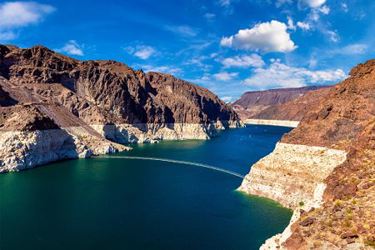Pervasive Western Drought Exposes PFAS Contamination In Groundwater Sources


The ongoing water scarcity throughout much of the Western U.S. has revealed many larger trends affecting drinking water and wastewater treatment. It has disclosed tensions between neighboring states, the pervasive impacts of climate change, and the potential for local regulations to reverse consumption trends.
And now, it has also exposed the presence of a notorious contaminant in critical national sources.
“Drought is exposing new layers of risk posed by PFAS contamination in drinking water nationwide, a public health hazard expected to cost billions of dollars and take years to solve, state and federal officials say,” according to Bloomberg Law. “As the historic drought hitting much of the country decreases the flow of rivers and streams, more municipalities are drawing water from underground aquifers and wells. And emerging data shows PFAS contamination could be prevalent in some of those groundwater sources.”
PFAS, nicknamed “forever chemicals” because of their long-lasting environmental impact, have been connected to acute health effects when consumed through drinking water. Numerous states have issued limits on their presence in drinking water and the U.S. EPA plans to implement discharge limits on PFAS to curb their presence as well.
With the historic drought pushing many communities to draw groundwater, municipalities must be more cautious than ever to safely pull from sources that are increasingly being found to contain PFAS
“As of December 2021, the PFAS Project Lab at Northeastern University had documented per- and polyfluoroalkyl substances in soil or water at 1,781 sites, with groundwater at 1,385 of those sites contaminated with the man-made chemicals,” per Bloomberg Law.
Arizona offers a case study in how water systems are adapting to this growing issue. The state is being forced to cut the amount of water it draws from the Colorado River Basin and rely more on groundwater, but the levels of PFAS in some local groundwater rose from 10 parts per trillion to more than 1,000 parts per trillion within six months, per Bloomberg Law.
In addition to searching for safer groundwater sources, reducing consumption in general, and holding polluters accountable for their roles in introducing PFAS into source water, Arizona is introducing new treatment facilities as part of the solution.
“The City of Tucson and ADEQ [Arizona Department of Environmental Quality] unveiled a pilot groundwater treatment facility in a quiet suburb of southeastern Tucson that is working to remove PFAS,” Inside Tucson Business reported. “According to the City, the facility uses a former Tucson Water supply well to pump contaminated water from the aquifer, cleaning as much as 360,000 gallons per day.”
As increased drought pushes more municipalities around the country to draw groundwater, it’s clear they will need similar solutions as well.
To read more about how drinking water utilities grapple with PFAS contamination, visit Water Online’s Drinking Water Contaminant Removal Solutions Center.
